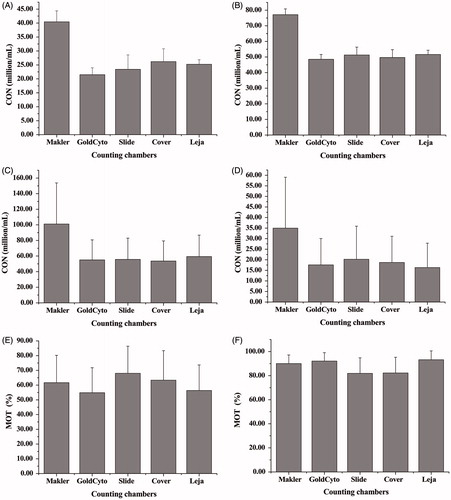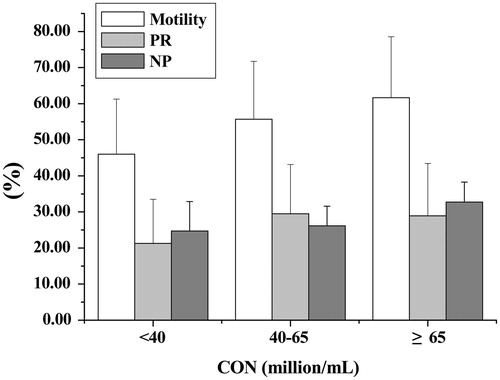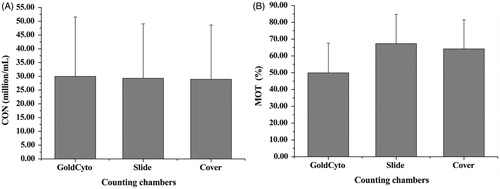Figures & data
Figure 1. Validation of the counting chambers. Validation of the counting chambers against the standard latex bead concentrations (A) 23.5 × 106/mL sample and (B) 51.7 × 106/mL sample. Significantly higher counts of two kinds of standard latex bead concentrations were obtained from Makler than from other counting chambers. Similar descripitive and comparative stastical analysis of all counting chambers with CASA in fresh and separated sperm concentration test (C and D); (C) fresh sperm sample and (D) separated sperm sample. Assessments of sperm motility by various counting chambers with CASA (E and F); (E) fresh sperm sample and (F) separated sperm sample. Significantly higher motility percent of fresh sperm from dropping loaded coverslips (including Makler, Slide, and Cover) than that of capillary-loaded (including GoldCyto and Leja). The standard deviations in C, D, E, and F (including in ), are relatively higher because of the statistical data from different semen samples. CON: concentration, MOT: motility.

Table1. The standard latex bead concentrations (mean ± SD × 106/mL) obtained by different counting chambers.
Table 2. Descriptive and comparative sperm concentrations (CON) (×106/mL), motility (MOT %) assessment, and kinematic measurements from 56 patients by different counting chambers (mean ± SD).
Figure 2. Measurements of motility and kinematics of fresh sperm under the different concentrations (million/mL). The higher the sperm concentration, the higher the percent of sperm motility and non-progressive. PR: progressive; NP: non-progressive; CON: concentration.

Figure 3. Ancillary tests of 32 fresh sperm samples using three counting chambers, including GoldCyto, Slide, and Cover. (A) Analysis of concentrations (p > 0.05) and (B) measurements of motility (p value between GoldCyto and Slide less than 0.05, p value between GoldCyto and Cover less than 0.05, p value between Slide and Cover more than 0.05). CON: concentration; MOT: motility.

